Mompeo probably owes its name to the Roman General Gneo Pompeo, whose Villa was built here. The Roman settlement is evidenced by several archaeological sites, funerary monuments, remains of villas, and the peculiar bridge over the Farfa River.
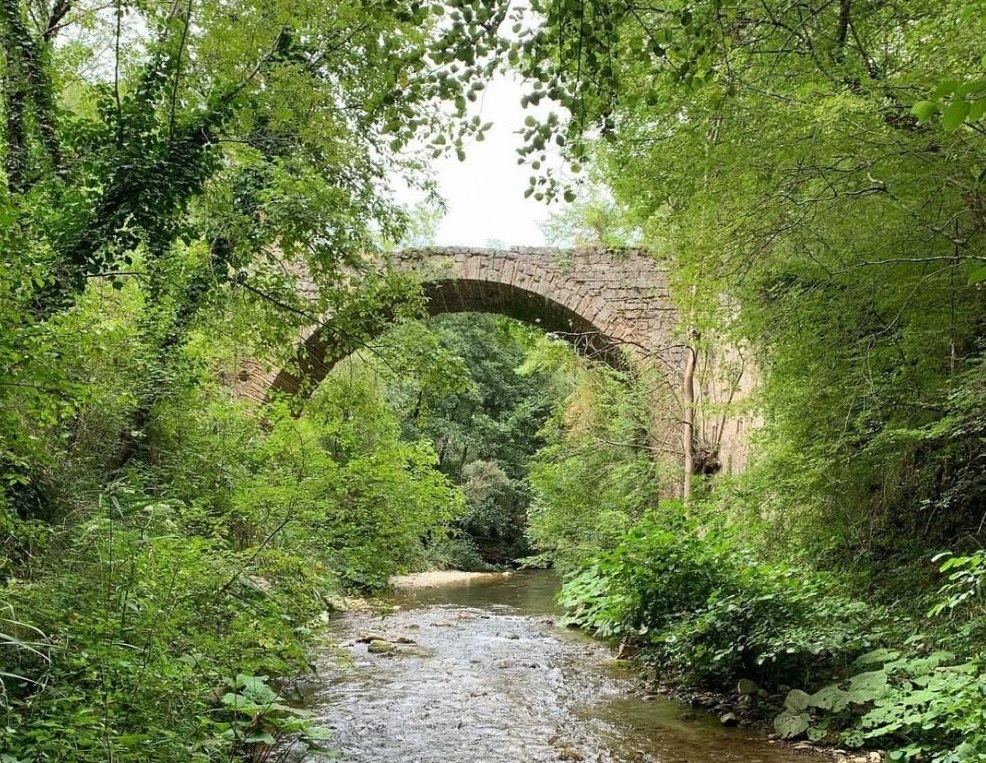
The Roman bridge over the Farfa River in Mompeo
In 1956, a Roman road cut into the rock was discovered near the current Passo Corese on the Salaria, which connected the small hamlet to the Valley where the Farfa Abbey now stands.
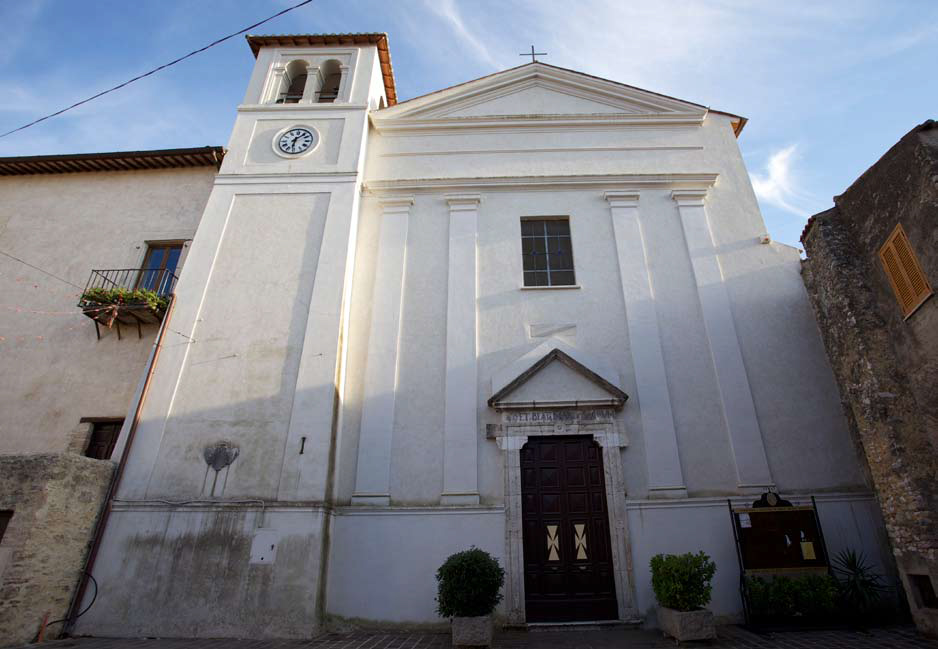
The Parish Church of the Natività di Maria Santissima in Mompeo
The Orsini Naro Castle, today’s Baronial Palace, built to defend the Valley of Farfa and the Parish Church of the Natività di Maria Santissima, dates back to the Middle Ages.
Although very ancient, Mompeo achieved its highest glory in the second half of the seventeenth century, thanks to the Orsini and Naro noble families, who renovated the village and made it one of the most beautiful in the province.
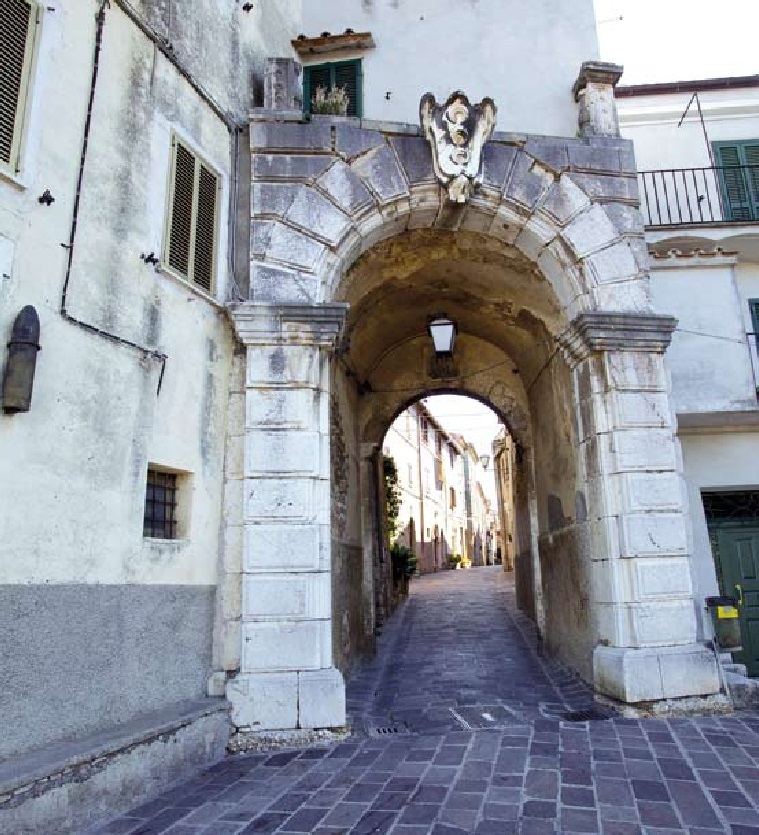
The entrance gate to Mompeo with the coat of arms of the Naro Family
The presence of the Naro Family in Mompeo is testified by the coat of arms above its entrance gate.
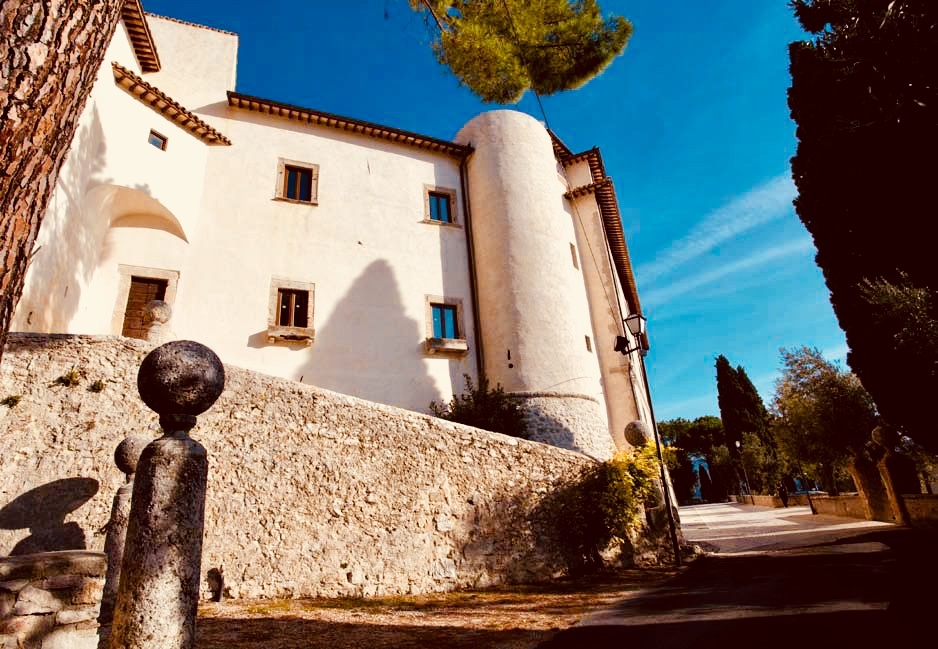
The elegant Baronial Palace of Mompeo
Bernardino Naro, and then his son Fabrizio, made the Castle acquire greater importance, turning it into a Baronial Palace, and enhanced the whole village, building new fountains, avenues and gardens enriched by marble columns surmounted by spheres. Bernardino and Fabrizio where fond of Mompeo so much, that they wanted their hearts to be buried in the family chapel there, while the rest of their remains can be found in the Church of Santa Maria sopra Minerva in Rome.
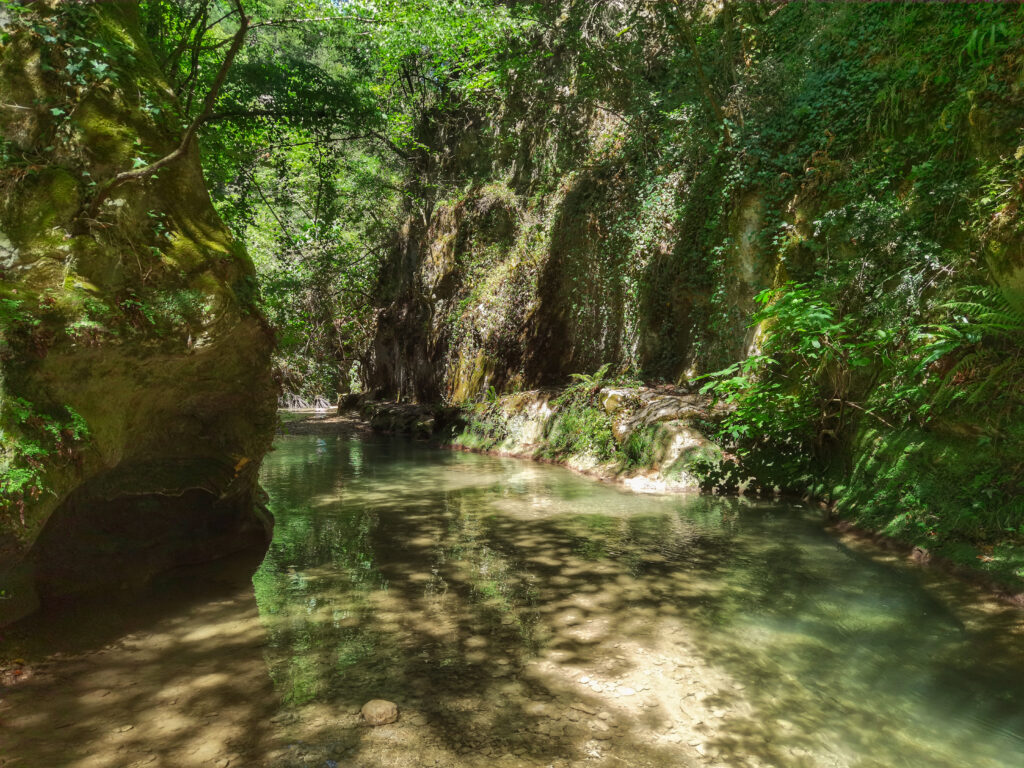
The Farfa Gorges in Mompeo
The extraordinary “Monumento Naturale Gole del Farfa” is a paradise for canyoning and water-trekking lovers. Over the centuries, the Farfa River, one of the most important tributaries of the Tiber, has formed here challenging bends, canyons, whirlpools and natural waterfalls.
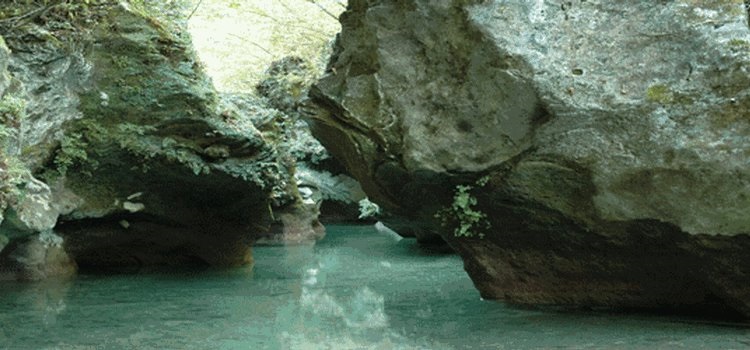
The impressive Farfa Gorges
The Natural Monument, part of the “Riserva Naturale Nazzano Tevere Farfa”, boasts a network of archaeological-naturalistic routes, which start from the village of Castelnuovo di Farfa.
The unmissable typical dishes are the maccheroni a fezze with garlic, the sagne with olives and mushrooms, and the sweet or savoury fried pizza. Also worth tasting is the bruschetta, toasted bread seasoned with local DOP extra virgin olive oil, the “green gold” of Sabina, celebrated in Mompeo in mid-November during the “Festa dell’Olio Nuovo”.
